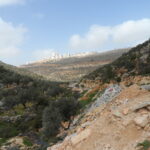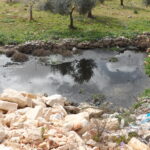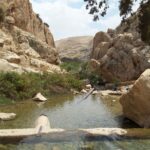IGCP 730: Hydrogeological significance and climatic change interactions of UNESCO potential Geopark sites in the Mediterranean countries
Project Summary
Mediterranean geo-heritage sites are variable in their related water sources conditions due to humanity careless actions and climatic changes. They are enriched by spring complex system emerging through geological complex stratigraphy. The majority of them are still in use in their cold and thermal temperature kinds. The spring water suitability is influenced by different geological, climatic change and hydrogeological factors. The water cycle evolution that affected the interactions of the Geopark sites to their related hydrogeological aquifers has to be determined to address their water availability and affordability. The project will focus on the hydrogeological settings of the Geoparks water in the southern Mediterranean countries of Palestine, Jordan, Tunisia, Morocco, Egypt and Spain (Northwestern). The study will bring results in the water resources management integration from quantitative and qualitative point of views. The hydrogeological complex settings around their water sources will be determined in order to check their potentiality for initiating Geological touristic bases for strengthening the Geopark’s role in their societies. The project will focus to topics addressing critical issues for the future sustainability: Water provision issues associated with climate change: hydrogeological water availability, groundwater quality and health. The innovative project results will support in achieving global water sustainability.
Partners
- Dr. Marwan Ghanem (Project Coordinator – Palestine leader)
Address: Birzeit University – Palestinian Association for Environmental Develpment P.O.Box 323 Ramallah – Palestine
Tel.: +970 598442265
Email: marwan.ghanem2012@gmail.com - Dr. Alsharifa Hind Mohammad (Project Secretary – Jordan)
Address: Jordan University – Amman – Jordan
Email: alsharifahind@gmail.com - Dr. Badiaa Chulli (Tunisia)
Address: Univesity of Carthage – Water Research and Technologies Centre, Teknoparc – Tunisia Email : bchoulli@yahoo.fr - Dr. LAFTOUHI Nour-Eddine (Morocco)
Address: Cadi Ayyad University, Faculty of Sciences Semlalia of Marrakech , Earth Sciences Dept. – 12 Lotissement Mabrouka, 40010 Marrakech – Morocco
Email : noureddine.laftouhi@uca.ma - Dr. Fagr K. Abdel-Gawad (Egypt)
Address : Centre of Research andApplied Studies on Climate Change and Sustainable Development, NRC – National Research Centre, Cairo, Egypt
Email : fagrabdlgawad@gmail.com, 6. Dr. África de la Hera (Spain) Address : Instituto Geológico y Minero de España (IGME), Ríos Rosas 23, Despacho 03-P1-06, 28003 Madrid E-mail : a.delahera@igme.es
Project Areas and Activities
Geoparks can demonstrate the water sources management, the relationship between geology, hydrogeology, landscape and climatic influence. Geoparks can and should play a vital educational role in raising awareness of the global water crisis and the sustainability of their water sources. The project aims to identify an inventory of the hydro-geological sites of outstanding value in the targeted countries; Promote and increase the awareness among policy makers and local communities about their Geoheritage necessity. Inventory of geoparks will benefit in the local sustainable development by capacity building in the field of geo and hydrogelogical heritage through a strong networking and the organization of conferences, seminars, symposia, and workshops.
The project consists of hydrogeological investigations significances to water sources in Geoheritage sites in the Mediterranean countries of Palestine, Jordan, Egypt, Tunisia, Spain and Morocco. More information about the proposed work related to these sites and the activities to be conducted in these sites are described in the following sections:
Palestine is famous in existing numerous cultural heritage sites spreading all over the country. The existence of these sites represents special hydrological processes proofed from the nearest water source that was feeding them during their civilized appearance. Many of these sites are UNESCO listing sites like Ein es Sultan site and the others are potential sites of the national strategy like Shuqba Cave (Natuv area). One of the most touristic historical site is Tel es Sultan, the ancient city of Jericho (UNESCO heritage site). The nearby area is enriched by spring complex system. It consists of many geological complex clusters; Ein Sultan, Qilt, Dyuk and al Auja. The Shuqba cave is alternative site, located in the western side of Ramallah and near spring complex system. The system is composed of different cluster springs belonging to the Upper Cretaceous age and distributed in linear clusters of 25 kilometers from Ramallah city to the rural communities in Ramallah. The site is located in the middle part between the Mediterranean Sea and Ramallah highlands. The two sites are located in the twin wings of the water divide which provides replenished water to both feeding aquifer. The spring water suitability is influenced by different geological, climatic and hydrogeological factors. In addition to that Climate change and COVID-19 period affected nowadays the natural and social use of these springs. These cultural sites are investigated from civilized history and their influenced water related source. The ancient civilizations were connected to their drinking and agricultural water sources.
The activities that should be carried in the project will include the followings: The water cycle evolution that affected the hydrogeological interaction to the aquifer has to be determined. The evolution of the water divide during decades upon the rechargeable rainfed water to the aquifers of both sides has to be investigated. The water rock interaction of both aquifers has to be studies. The study will take into consideration the water resources management integration from quantitative and qualitative point of views. The hydrogeological influence to the adjacent sites will be detected scientifically to address the water availability. The geological complex around these spring clusters will be determined in order to check their potentiality for initiating Geological touristic roles as well as Geoparks in the area. The project will focus to topics addressing: Water provision issues associated with climate change: water availability, quality and health, which are emerging critical issues for the future sustainability of the society.
In Jordan half a century ago, Azraq area in the northeastern side of the country was legendary. Historical photos show ponds flanked by thick clusters of reeds and squat date palms. Nowadays; Azraq’s mudflats, marshes and pools depended on reserves of underground water replenished by yearly rains. In the early 1980s, Jordan’s government began drilling wells near Azraq and pumping millions of cubic meters of water annually from the aquifers. Soon, the aquifer was losing water faster than rains could recharge it. In 1987, the springs that fed the two main pools in northern Azraq stopped flowing. By 1990, the pools dried up. Today, the water table has dropped from the surface to tens of meters below ground. Climate change isn’t the only problem that is stressing Jordan’s limited water resources. The country has a rapidly growing population, which has swelled with refugees from adjoining nations, most recently around 1.5 million Syrians who have fled civil war; most of them is living now in camps near Azraq city affecting negatively Azraq Basin. The activities concerning the Jordanian site should be as follows:
The Hydrogeological investigations have to be carried out in the area in order to understand the negatively caused human actions in the aquifer delineation around this Geoheritage in Azraq area. Hydrogeological characteristics comparison will be made to other Geoparks in Jordan like Wadi Mujeb, Waqf Asswan area, Wadi Rum or Hasa and Russaifa Phosphate mines.
In Egypt, Alexandria is considered to be one of the most historically rich places on the shores of the Mediterranean Sea. The city is densely polluted due to anthropogenic activities and the fact that it is a highly demanded vacation and touristic site, which poses a great danger to the precious historical sites due to the pollution resulting from these activities in return producing acid rain which falls on the historical sites in the winter months, which are always heavy in rain and hail falls. One of the most prominent historical sites of Alexandria, and is a guaranteed tourist attraction, is the Citadel of Qaitbey. Previously one of the world’s seven wonders, it has stood strong since the 1480s, where it was built under the era of Sultan Qaitbey. It is also under danger due to the years of erosion of the land
beneath it, as shore waves are strong and harsh all year, and the erosion rate of the waves is high. It is unknown just how acidic the rain that falls on such sites is due to the fact that little research exists that determines the acidity of the rainfall. Such research is outdated and is not updated to today’s pollution levels. The activities should include the acidic rain effect as well as the climate change that affects the water resources there in regards to the water intrusion to the groundwater aquifer around the site.
Tunisia has become an internationally recognized tourist attraction in the field of hot spring water therapy. Tunisia enjoys a significant amount of mineral water resources including more than 100 fountains and springs, 30 of which have cold water of less than 25 °C, in addition to 70 hot water springs of up to 45°C. Zaghouan aqueduct is one of the largest health complexes in Tunisia and it is one of the longest built during Roman times (UNESCO heritage site). In addition to Zaghouan’s rich history in aqueducts, it boasts one of the beautiful Geopark in Tunisia and a mountain famous for caves that are open for exploration. More than 25 caves are dispersed through the mountains of Djebel Zaghouan, offering the visitors a unique experience of stunning caves showing marble and limestone. Rainwater seep into the cracked limestone substrate of the Zaghouan mountain range. Part of this water comes out directly on the slopes of the Jebel Zaghouan, giving birth to a number of cold springs, including the famous Water Temple, built during the reign of Emperor Hadrian and the starting point of the great aqueduct of Carthage. Another part of the rainwater seeps in depth then circulates in the deep geological layers where these waters heat up following the geothermal gradient and enriched in dissolved minerals, before to climb abruptly to the level of Jebel Oust and Hamma Zeriba. The activities should include the following items:
Detailed geological mapping and hydrogeological, geophysical and geochemical surveys and geochemical surveys will be carried out in order to evaluate the geothermal potential of this area, and to construct a conceptual geothermal model of the hydrothermal system. Establishment of a scientific approach based on the exploitation of integrated surface and subsurface data for the characterization of underground aquifers in semi-arid regions. Such an approach will find application in most sedimentary basins. The aim is to introduce the synthetic geothermal approach in the integration of the main hydrogeothermal indicators in the area and so demonstrate its potential as a platform for regional studies and therefore assist in the discovery of new geothermal prospects. This project will contribution to the economic and social development of the Zaghouan region by finding new underground water resources for agricultural and drinking water needs, support for tourism and agricultural investment programs underway in the region and Implementation of a health tourism center (new Spa).
Morocco: The central part of Morocco and particularly the region of Marrakech also known as the Haouz of Marrakech, has experienced a very strong link with ground water resources. These structures and the resources have suffered from the throes of climate change and increased demand for water as well as urban expansion. While hydrological and hydrogeological studies have greatly contributed to better knowledge of water resources, the safeguard and enhancement of the hydraulic and cultural heritage of structures associated with the use of water remain weak. The objective is to study this Geo-heritage in the dimension of its link with the geological complex of the High Atlas of Marrakech and its role in the supply of these
resources, a precise spatial mapping of these works, a possible rehabilitation of certain aspects of the hydraulic heritage, education and awareness of young people towards our hydrogeological history. On another level, the Toubkal geopark, defined in the mountainous part of the Ourika basin, will have to be redesigned in order to extend it significantly to the Tensift river north of Marrakech to include not only the water sources but also their uses downstream. The activities should include the classifications of the spring sources of the targeted sites, several surveys will be performed, discharge in streams and springs will be regularly measured using current meters, and the water level will be monitored on site in reference cross sections.
Spain has a good number of thermal waters, with a long history in the context of a semi arid country. Some of them without special protection or recognition. In this proposal two sites are suggested to be integrated as potential alternative Geopark: (1) Bande hot springs. (2) Springs of Támega river. These sites are located in an area of 50 km, in Galicia, North of Spain, under a Mediterranean climate. They have in common the following aspects: they are Geological Interest Sites with high hydrogeological interest. The thermal waters of Bande are a set of springs located in the municipality of Bande, in the extreme south of the province of Ourense. The Bande Baths were ancient uses used by the Romans, which were flooded by the Las Conchas reservoir. At present, when the waters of the reservoir go down, the water is used through pools. Its waters are characterized by being strongly thermal 51º C, neutral pH and variable mineralization. Its chemical composition is bicarbonate (fluoridated) sodium. Támega River Springs (Cabreiroá, Sousas and Fontenova) are a series of springs, used for mineral water, located in what is known as the Verín Basin drained by the Támega River. This depression is located to the South of the Province of Ourense and is surrounded by important reliefs that widely exceed 1000 m, highlighting the Invernadeiro Natural Park to the North. They are located in granites of two synkinematic micas that are located in the schists of the Nogueira and Santabaia Groups with coatings of different thickness of sedimentary deposits of alluvial, colluvial and floodplain origin. It is striking that the waters emerge with their own natural gas, in the case of bicarbonate, sodium, lithium and acidic waters. The recognition of these sites as geopark could bring important benefits to the local societies in the area, helping tourism activities and sustainable development through educational and environmental activities.
Study Structure
The study structure composed of three major mainstreaming, one describing the water utilities from past to present of the targeted hydrogeological sites in Palestine, Jordan, Tunisia, Egypt, Spain and Morocco through literature review, field visits and personnel and communal communications. The study describes the ancient water components and their stand in present days. This step shall include a review and assessment of all previous efforts and previous related studies. It shall collect data from all stakeholders and right stakeholder, especially Ministry of Tourism and Antiquities, Municipalities and other village councils, Water and Agriculture Ministries, Awqaf and all related Authorities and Ministries. The second point will be focused on the hydrogeological and hydological elements and their
scientific interconnections that brought basic strong foot for the ancient settled civilizations in these areas. This will include all related hydrogeological, Hydrochemical, Modeling, Cold and Hot springs interactions, acid rain interaction to aquifers. The third will target the social cohesion of Mediterranean sites communities for verifying the social continuation from ancient lives to present and their affected on water management point of view. Political, environmental, geological cultural and socio-economic constraints of the targeted sites and their influence in the social cohesion of their communities. Role of springs and their water system ( aqueducts, channels, pools, etc.) in establishment and sustainable of ancient and present settlements in targeted Geoparks will be focusing.



